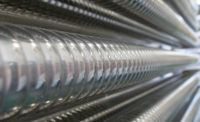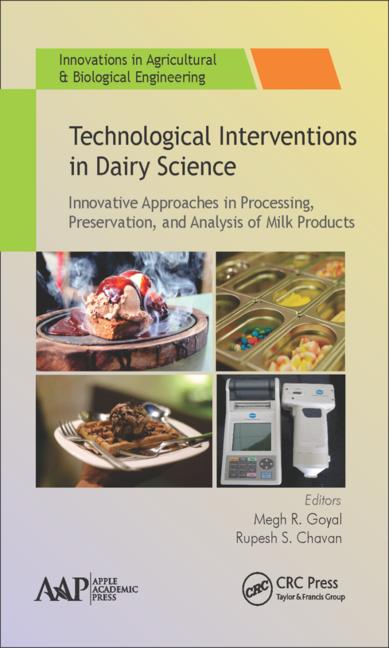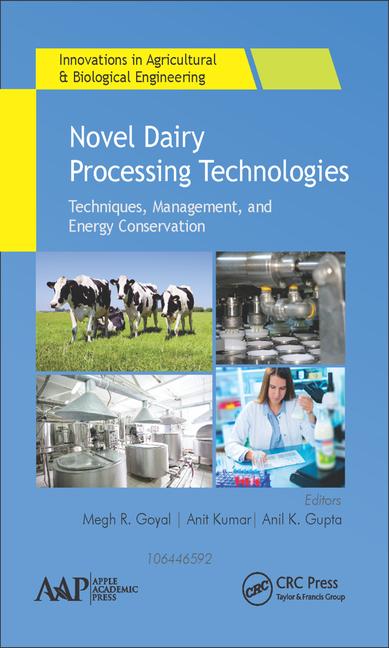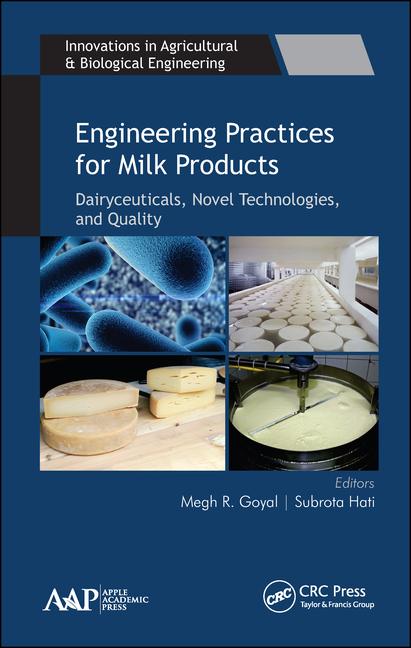A hot market for heat exchangers in dairy processing
Upgrades to technologies are enabling dairy processors to produce higher quality products more efficiently and cost-effectively.










It is a transformative time for heat exchangers. The core dairy processing technology, which plays a key role in pasteurization and the production of such products as milk, cream, ice cream, yogurt and cheese, is undergoing refinements as more plant operators seek designs that enhance product quality while streamlining operating expenses.
"Improvements are centering around operational performance, efficiencies, equipment longevity and having greater access to performance and operational data," says Daniel Voit, CEO of Blentech Corp., a Santa Rosa, Calif.-based device supplier.
Heat exchangers regulate fluid temperatures in processing systems to meet the requirements for pasteurization, filling operations and food safety, notes Central States Industrial (CSI), a Springfield, Mo.-based device distributor.
"Plate heat exchange technology is vital to dairy, beverage and processed food applications," CSI reports. "They provide the exact combination of temperature and holding time for precise pasteurization and ultra-high-temperature treatment and regeneration in a variety of applications."
In addition, heat exchangers are an important part of clean-in-place processes, where cleaning of system components takes place without having to dismantle or open the equipment for cleaning. The devices heat the cleaning water and solutions to a consistent temperature to aid in the removal of residue, CSI states, adding that heat exchangers also help reduce utility consumption by conserving water, electricity and steam.
Heat exchangers operate by transferring heat from one fluid to another without allowing the fluids to mix for heating and cooling. Technologies include shell and tube devices, where one fluid goes through tubes and the other through a larger shell surrounding the tubes, as well as plate exchangers, which consist of a series of plates held together in a large frame with the liquids in spaces between the plates.
Device variables include energy-efficiency, cost and size. The optimal heat exchanger for each dairy operation will differ in accordance with such factors as the product under production and the intricacy of operations, analysts note. A typical milk process, for instance, will have a large plate and frame heat exchanger for pasteurizing, while operators may use a dynamic scraped-surface heat exchanger for spray drying cheese due to the high percentage of solids, says Trent Bullock, CSI manager, engineering services. Scraped-surface heat exchangers are intended to increase heat transfer by, for instance, removing fouling layers and increasing turbulence in case of high-viscosity flows.
"The designs help dictate product quality and operating costs from energy use when heating or cooling products," says David Miles, executive vice president of MicroThermics Inc., a Raleigh, N.C.-based device manufacturer.
Heat exchangers also enhance sustainability by reusing heat that is already in the process, says Melissa Fryer, sanitary heat transfer business development manager, food and water division, for Alfa Laval Inc., a Richmond, Va.-based device manufacturer. That includes pasteurization in which raw incoming milk is heated with pasteurized milk, Fryer says, noting that more than 90% of the process heating and cooling in pasteurization utilizes reused heat.
"This cycle produces substantial energy savings and lower plant operating costs," she says.
Equipment is evolving
Newer heat exchanger designs include units that are easier to clean and simpler to open for inspection. They also enable processors to better diagnose plate conditions, Bullock says. Technologies also are enabling processors to more gently treat sheer-sensitive products that can change viscosity when under stress or pressure, says Kevin Kennedy, application specialist, heat exchangers for Tetra Pak Inc., a Denton, Texas-based equipment manufacturer.
"Processors want to minimize the physical and chemical changes that could occur with products during cooling or heating to maintain the quality of the finished items," says Matt Hale, international sales and marketing director for HRS Heat Exchangers Ltd., a Watford, England-based supplier. "Gentle handling is a priority when selecting tubular heat exchangers."
The opening and closing of heat exchangers are becoming less labor-intensive, too, with the availability of PLC-controlled systems that operate with the push of a button versus the traditional manual tie-bar designs, says Uday Shastri, senior technical specialist – APV heat exchanger for SPX Flow Inc., a Charlotte, N.C.-based supplier.
"This not only saves maintenance time and cost, but also helps preserve plate longevity as the system closes to the exact compression and avoids the risk of over-compression and plate damage," he notes.
Other advances include the availability of thinner turbulent plates, which increases heat transfer rates and regeneration efficiency while reducing the equipment footprint, Shastri states.
The move to automatic frames also is leading to greater efficiency and safer operations when opening and closing heat exchangers, including when using multiple electric motors to automatically turn tie rods, Fryer says.
"For larger frames, the opening and closing process requires substantial force, and as with any frame, this process requires precision," she says. "The control panel monitors the position of the pressure plate and stops at the proper closing dimension so there is no need to manually measure distances and risk damage by over- or under-tightening. This drastically reduces the time required to close the frame from hours to minutes."
She adds that the ability to access the plate pack with minimal equipment removal and without the need to provide manual force to close the frame makes the process safer for employees.
Evaluate the effectiveness
Dairy processors can judge the effectiveness of their heat exchangers by analyzing the time between cleanings, the range of products being run, energy costs, run times, temperatures and flow rates, and the periods between repairs and necessary maintenance, Miles says.
"As there are no moving parts in plate and tubular heat exchangers, units should run the same day to day with proper cleaning and maintenance," he states.
Heat recovery levels also are a strong barometer for determining performance, Shastri says. "Anything above 90% is typically acceptable for dairy processing, but achieving up to 95% can increase savings and potentially deliver a better return on investment," he says. "Higher efficiency levels save energy costs and optimize the use of other utilities such as glycol and steam."
Periodic visual inspections, meanwhile, will ensure clean-in-place systems are efficient, says Aamer Karim, product manager, liquid technology-heat treatment and liquid and powder technologies North America, GEA Systems North America LLC, a Columbia, Md.-based manufacturer. He notes that operators also should inspect the cooling and heating media for such abnormalities as scaling, rusting or erosion.
"Dairy processors can utilize control systems to continuously monitor valves and pumps," he states. "Any deviation from regular operating parameters means something is wrong and warrants an inspection."
Adds Bullock: "Having to run hotter and colder media temps than you did when the unit was new could be a sign of fouling and the need for cleaning."
In addition, processors should study the effectiveness of plate heat exchangers by analyzing pasteurizing processes, says Corbin Behnken, senior sales engineer for Bristow, Va.-based supplier AGC Heat Transfer Inc.
"Improving regeneration efficiency will reduce utility costs for heating and cooling products," he says, noting that it is common for processors to recoup regeneration improvement expenses in six months through utility savings.
Monitoring the heat transfer readings also is vital when analyzing execution, Voit says.
"It is important for exchangers to handle the necessary heating and cooling without deterioration and provide consistent heat transfer at the necessary rates," he says. "Processors that monitor throughput and quality will know devices aren't performing in the proper manner if there is deviation in those areas."
Options abound
The most functional heat exchangers, meanwhile, support specific dairy applications, Karim says.
"Running a variety of products on the same processing unit may affect energy consumption and product quality, as different items demand different process variables," he states.
Using undersized or oversized equipment, meanwhile, can result in higher utility costs or lower production rates with more time spent sanitizing, Bullock says.
Companies seeking lower-cost technologies may opt for higher-maintenance plate heat exchangers versus lower-maintenance tubular systems, which will result in more production downtimes, Karim states.
"But many times, the operational expenditure for plate heat exchangers will quickly overtake the initial capital expenditure difference of tubular units," he says.
Processors should confer with system integration, operations and maintenance experts within their companies when deciding on the appropriate technologies, Behnken says.
"The team must collaborate to determine the most important attributes, while also receiving guidance from a plate heat exchanger expert who knows what features are available and how to best meet customers' needs and desires," he states. "Designing a dairy plate heat exchanger is a blend of science and art, with seemingly similar designs having very different attributes. If that expert does not seem to understand your process or is [not] willing to guide you, find a new expert."
It is important as well for processors to leverage the knowledge of device vendors when making purchasing decisions and "not try to reinvent the wheel," Voit says.
"Talk to as many suppliers as possible and understand which have the appropriate technologies for the different applications," he says.
Be open to change
It can be challenging, however, for plant operators to break from tradition and incorporate newer heat exchanger designs, even if the units will improve operating efficiencies and reduce energy consumption, Bullock says.
When contemplating changes, it is important for processors to provide potential device suppliers with detailed information on plant operations, Kennedy says.
"This can allow manufacturers to find the optimum solution that can handle all the set points, pressure drops and changes in viscosities between products," he states. "Getting the design right before the unit is delivered saves time and money."
Processors also must ensure that the technologies will maintain quality over a range of products and recipes with different viscosities and other characteristics, Shastri states.
"Selections such as ice cream mixes and new innovative items designed to capture the consumer’s imagination can have higher viscosities," he says. "This increases the pressure drop in the heat exchanger, requiring a design that ensures the unit is not compromised."
While manufacturers can design plate heat exchangers with different gap plates and turbulences to meet a range of viscosities, he says it is essential that processors clearly state their requirements to ensure that technology suppliers fully understand the operator's goals and key performance indicators (KPIs).
"Working closely with the dairy and understanding how products react under different conditions means the heat exchanger design can be adapted accordingly, providing a more effective solution," Shastri states.
Fryer agrees.
"Working with experienced suppliers and providing the best possible product properties and process specifications early on will help processors and suppliers collectively meet and overcome challenges,” she says.
Hale adds that an appropriate supplier will understand that every business is different.
“That is important as providing an efficient solution will reduce energy and maintenance costs over the life of the equipment, which is good for the financial bottom line and the environment,” he says.
Looking for a reprint of this article?
From high-res PDFs to custom plaques, order your copy today!













